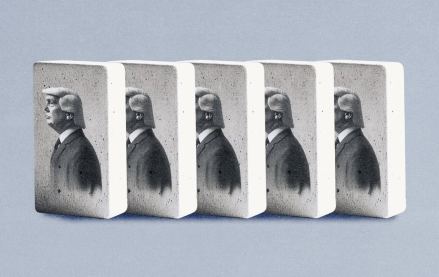Save 50% on a 3-month Digiday+ membership. Ends Dec 12.
‘Some brands will continue to take liberties’: Confessions of an influencer marketer on brands misusing creator content

The creator economy is a minefield — from varying fees to trying to prove value to the C-suite — which is why marketers need to know how to operate professionally, in the same way they do for every other part of marketing.
In this edition of our Confessions series, where we trade anonymity for candor, the CEO of a U.S. influencer agency talks through three instances in the past month in which brands have wrongly (and in two cases knowingly) used creator content without proper usage rights, or paid that creator appropriately.
This conversation has been edited and condensed for clarity.
You mentioned that brands have misused creator content several times recently without the right permissions or compensation. Can you walk me through the first instance?
The first instance relates to influencers we manage. They partnered with a non-U.S. swimsuit company, and my talent manager was on the brand’s mailing list. When our team read the brand’s newsletter, they saw that the brand used the influencers’ image in their newsletter, but it wasn’t part of the agreement.
What happened next?
We went back to our brand rep saying we didn’t agree to this. She apologized, saying it was their social team that mistakenly did it.
Was it resolved after that?
Not at all. The same swimsuit brand then violated the influencers’ usage rights further.
In what way?
We had agreed to just one week of paid usage rights (to use the content for paid ads) via Meta platforms. Instead, the brand had continued to use an image beyond that timeframe. We went back to our rep again saying we didn’t agree to this. We agreed to one week of paid ads. And this was two months ago.
So we experienced two separate instances with the same brand, while the twins were in partnership with them, despite calling them out the first time.
What did you do next?
I halted the program and I wouldn’t give the brand any more usage because of that. We were going to say “we don’t want to work with you anymore,” but the brand came back with a sort of peace offering, by way of a longer contract. They were trying to make up for the inappropriate usage by increasing the twins’ influencer rate and the contract terms a little, rather than pay for the additional usage. So we agreed to see through the contract, but we won’t work with them again after this.
What about the third instance?
This one really bothers me. We’d started managing a U.S. lifeguard who has around 10,000 Instagram followers — so is a micro creator. A DTC brand, which is owned by a creator who owns a UGC agency, approached him asking if he’d like to be a brand ambassador for the product, and he said yes, but nothing ever came of it; they didn’t follow up or send him a contract. He didn’t even receive gifting of the product, instead bought it with his own money. He posted an organic video and this UGC agency used it without consent and ran paid ads on it.
What did you do about it?
We contacted the owner of the agency, who is a creator herself, so she knows what she’s doing. She uses micro influencer content because they probably don’t know to ask the right questions. And she knows using influencer content rather than relying on her own is more likely to not only get people to follow her, but purchase the product.
She said the video was submitted as part of our boot camp program, and under the terms of conditions, it did include a permission for advertising usage. We asked her to send us those Ts and Cs for clarification, but when we clicked the link it didn’t work. So we asked her to send it to us again, and she’s ignored any contact since.
Why do you think this is happening more frequently?
I think more and more brands are hopping into the creator space and some don’t know how to properly handle it.
If they’re handling the influencer piece in-house, it’s overwhelming managing the contracts and usage rights. They really need someone experienced running it for those checks and balances. If they’re working with an agency, they need one that knows what they’re doing and who doesn’t utilize things such as opt-in and not explaining to the influencer what they’re signing.
Do you think more brands are behaving this way?
Some brands handle it correctly. One of our influencers did a program with a body cream several months ago. The brand really liked her assets, and renegotiated to use her content for 45 days. They’re paying really well for it because they recognize the value of it.
Do you think these ‘bad brands‘ will ever stop taking liberties?
For us, it’s really difficult to find out who’s using your influencers assets when they shouldn’t be. It may get easier now we have AI, image and meta tracking, etc. but right now, the onus is on the influencer and the agency who manages them to be diligent and track where the content appears.
For smaller brands, they need better education around these nuances and to understand what usage rights really mean.
But aside from giving people the right knowledge and tools, there’s no real consequences for them, if they do this. Unless there are meaningful consequences, whether that’s financial, legal or reputational, some brands will continue to take liberties. You have to enforce and seek retroactive licensing fees. The question is, how? Who is going to enforce it?
In my example, sure, I can send attorney letters to those two brands and request the fees, but will they pay? Probably not.
If you have any insights to share about other instances like this, or any platform, if you’re a current or former employee of any of the platforms, or a creator, contact Krystal Scanlon securely using a non-work device on Signal: @krystalscanlon.27, email: krystal@digiday.com or via LinkedIn.
More in Marketing

How Costco stood against Trump’s agenda on tariffs, DEI this year
Costco has continuously been held up as an example of a company that has stood firm in its willingness to do what it believes is best for the business.

Brands look to experiential marketing as antidote to AI slop, digital fatigue
Brands are prioritizing experiential and IRL marketing as an antidote to ‘AI slop’ and digital fatigue.

Agencies push curation upstream, reclaiming control of the programmatic bidstream
Curation spent much of this year in a fog, loosely defined and inconsistently applied. Agencies say they plan to tighten the screws in 2026.








